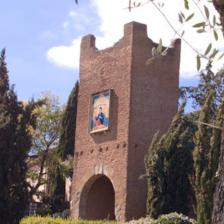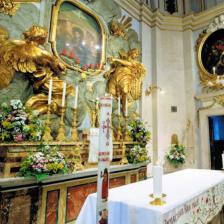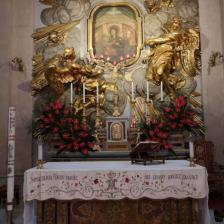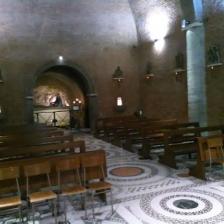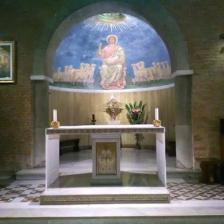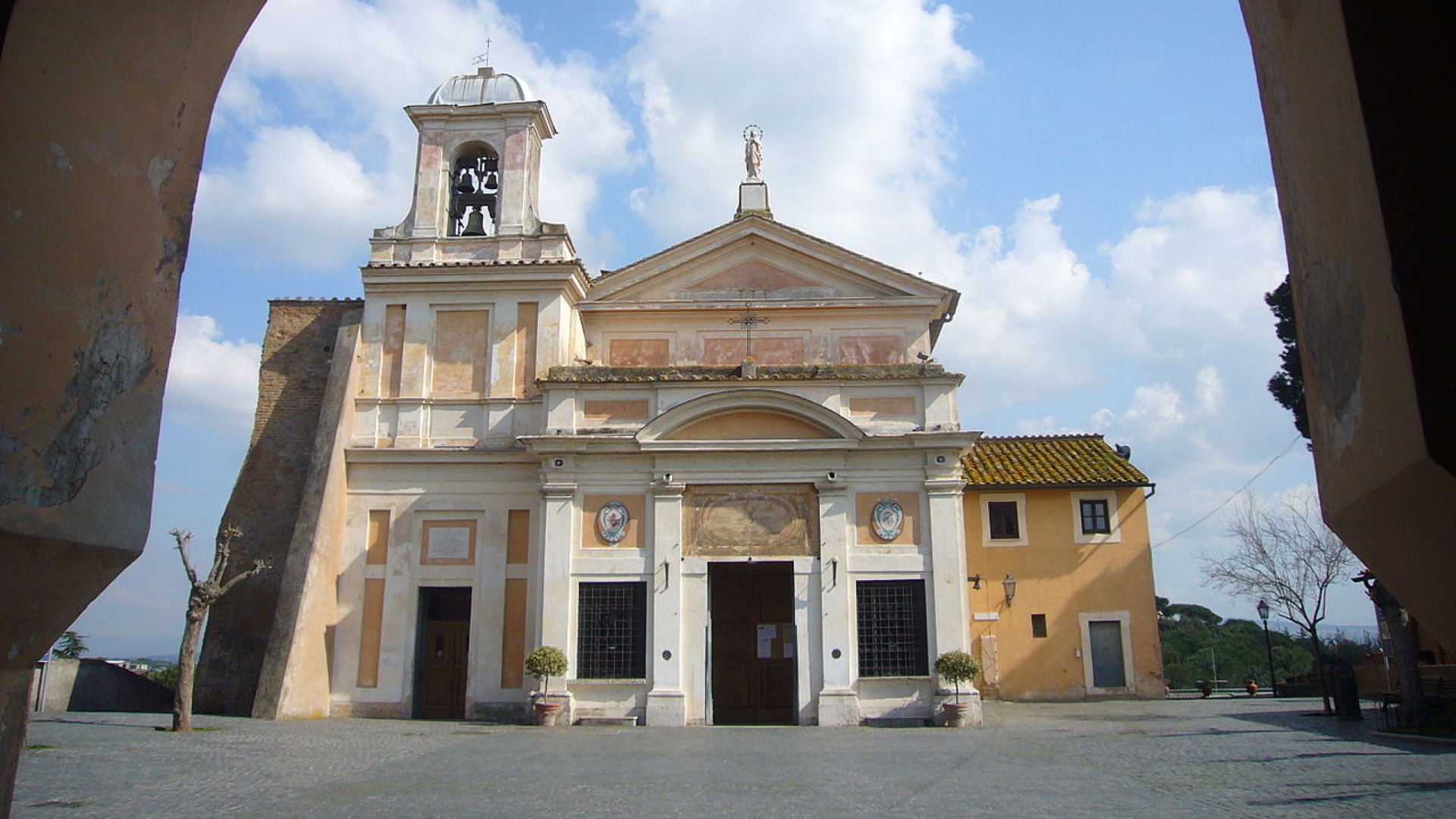
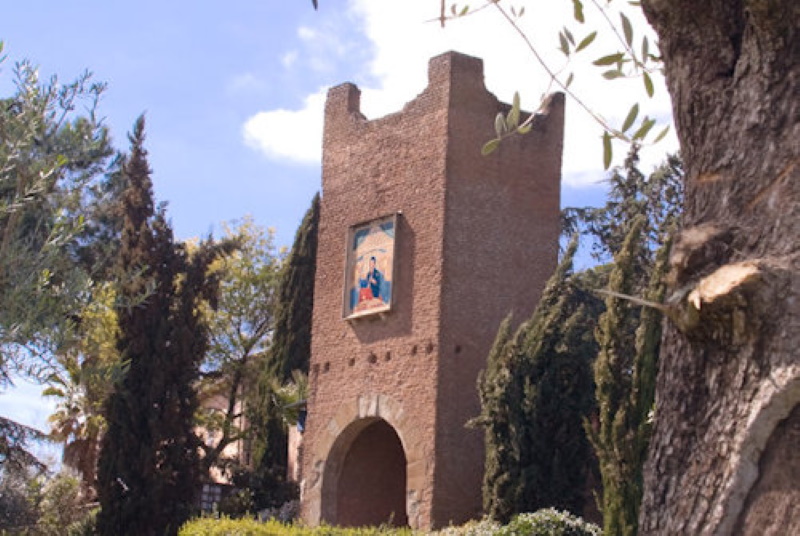
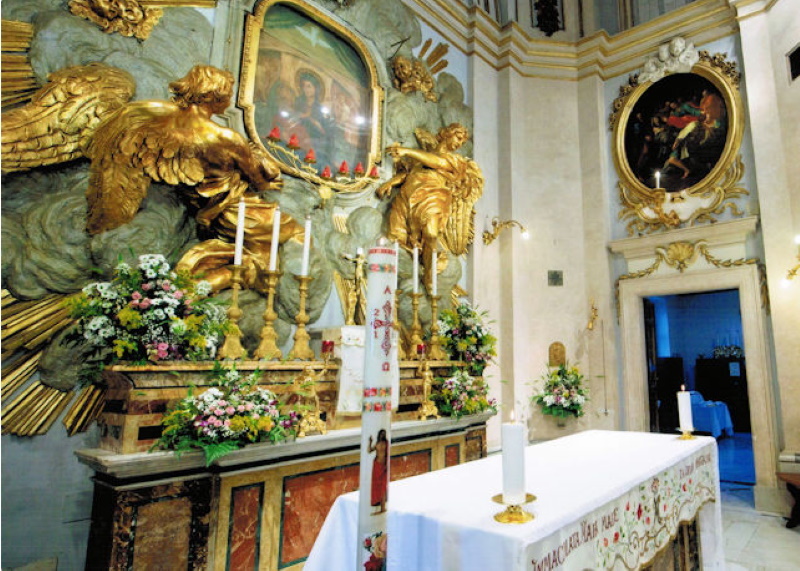
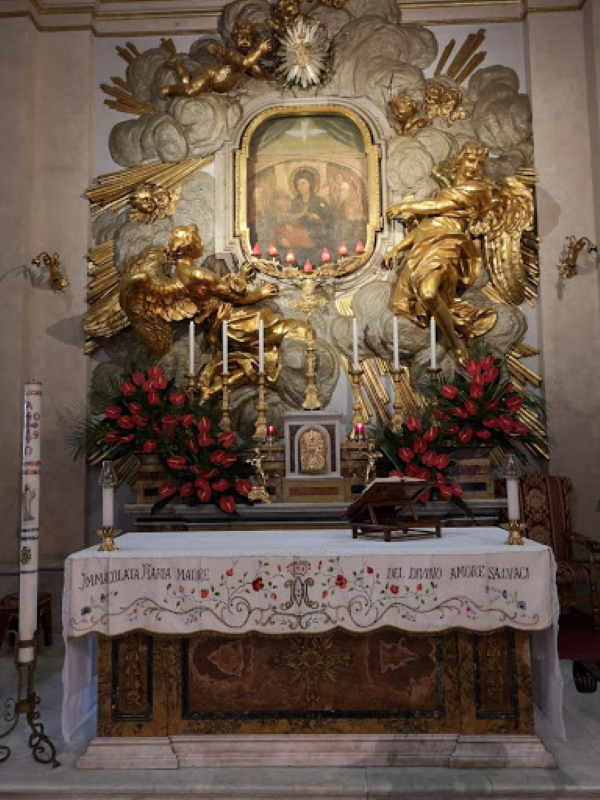
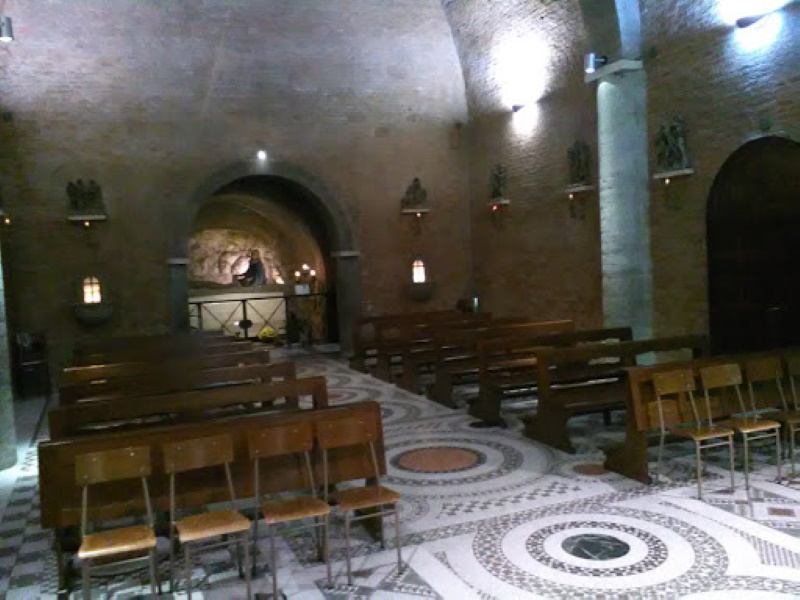
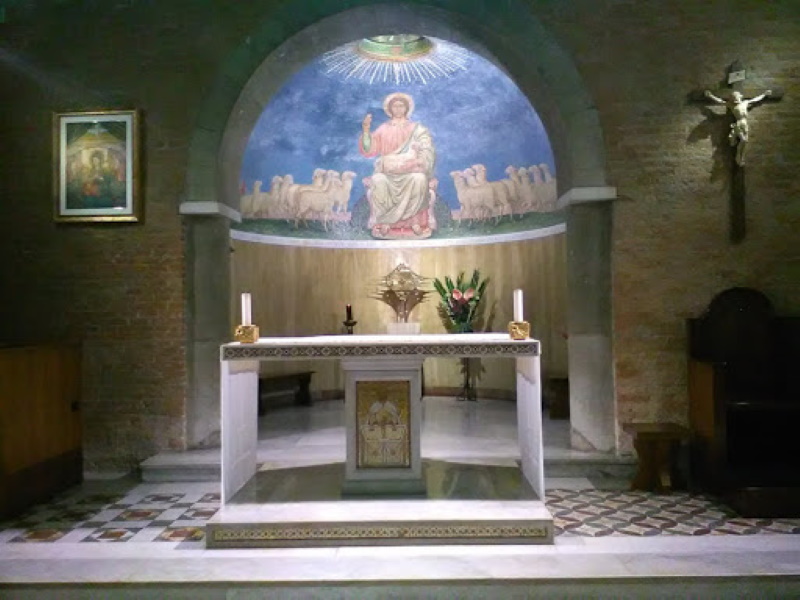
In Castel di Leva, an area of the Agro Romano about 12 km from Rome, there was a fortress dating back to the 13th century, owned by the Orsini family.
On one of the towers of the ancient castle, called dei Leoni - from which the subsequent degradation and denomination of the area derives - an image of the Virgin was frescoed. The Madonna, seated on a throne with the Child Jesus in her arms, was dominated by a dove with outstretched wings representing the Holy Spirit. It is not known when the fresco was made. It is dated approximately to the end of 1300, in particular referring to the somatic features characteristic of Mary's face.
The image was much loved and venerated, especially by the shepherds of the area who gathered under it on cold winter evenings to pray the Rosary.
One spring day in 1740, a traveler whose name was never known, probably a pilgrim on his way to San Pietro, got lost along those vast and deserted country paths. To ask for information, he headed for the castle, but just as he was about to enter it, he was surrounded by a pack of angry dogs. The poor man was terrified but soon realized that on the tower, there was a sacred image of the Virgin Mary. He turned to it for help, with all the power of his faith. The beasts suddenly stopped, as if obeying a miraculous order.
The echo of what had happened prompted the ecclesiastical hierarchy and the Cardinal Vicar, the Discalced Carmelite Giovanni Antonio Guadagni, to visit Castel di Leva. It was decided to protect the image of the Madonna, detaching it from the tower and temporarily transporting it to the small church of Santa Maria ad Magos, in Falcognana, 2 km from Castel di Leva.
In 1742, the detachment of the fresco from the tower was carried out. It caused no longer repairable damage to the sacred image. Besides, the transfer of the picture to the small church of Falcognana unleashed the chaos between the Chapter of San Giovanni in Laterano, to whose it belonged, and the Conservatory of Santa Caterina della Rota ai Funari, owner of Castel di Leva and therefore of the painting. The Sacra Rota intervened with a definitive decision on March 8, 1743. It was decided that the image belonged to the Conservatory of Santa Caterina and that the pilgrims' offerings were to be used for the construction of a church on the site where the miracle occurred.
The works began in 1744, for which Benedict XIV commissioned the architect Filippo Raguzzini. In just a year, the new church was ready to host the blessed image. On April 19, Easter Monday, 1745, the transfer took place. A gigantic crowd of Romans and inhabitants of the Castelli Romani accompanied the prodigious effigy from the little church of Santa Maria ad Magos to the newly erected shrine. The pope granted plenary indulgence to all the participants, as well as to those visiting the image within seven days after the transfer.
On May 31 of the Holy Year of 1750, the church and the main altar were solemnly dedicated to the Divino Amore, the title that clarifies the nature of the Virgin Mary: a girl who accepted to become the Mother of the Savior because she was filled with the Holy Spirit, or Divine Love. The celebration was presided over by the Bishop of Padua, Cardinal Carlo Rezzonico, who eight years later rose to the papal throne with the name of Clement XIII.
The shrine quickly became the center of devoted popular piety and the destination of numerous pilgrimages. It was, therefore, necessary to provide spiritual assistance to those who came to confess and receive communion. It was decided to entrust the care of the shrine to priests who lived there only in the periods of large influx, that is, during Pentecost. Only in 1802, the Sanctuary obtained its first assistant pastor, with the obligation of residence.
After 20 September 1870, with the proclamation of the first Italian government and the expropriation of ecclesiastical buildings and land, the Conservatory of Santa Caterina was entrusted to a Board of Directors, which, to maintain the conservatory's boarders, decided to rent the estate. The courtyard soon became a sort of warehouse and open-air barn, as well as an income opportunity for unscrupulous street vendors with their stalls and huts.
In June 1930, the sensational theft of all the jewels and gold offered over the centuries by devotees to the Madonna took place. This forced the Vicariate of Rome to send, with the obligation of residence, a rector who from 1932 also became parish priest of the new Parish of Divino Amore. The first was Don Umberto Terenzi, who on 25 March 1942 established the Congregazione delle Figlie della Madonna del Divino Amore, which, in 1962, was followed by the Oblate priests who have guarded the sanctuary ever since.
In 1944, during the WWII, the fresco of the Madonna was moved as a precaution to the church of Sant’Ignazio, where the Romans invoked it for the salvation of the city, vowing to erect a new sanctuary.
On 12 September 1944, the image of the Virgin returned to the shrine.
In 1947, the Crypt of the Addolorata was built in the cistern of the ancient palace, which still retains the splendid Cosmatesque mosaic floor. Here, you can admire an artistic reproduction of the first miracle of the Madonna of Divino Amore and the Vow of Mary.
Since 1935, the tower of the first miracle, a construction with squared tufetti, about 10 meters high, houses a reproduction of the original painting, made in majolica.
On 4 July 1999, the New Sanctuary was consecrated and the Romans were dissolved by the vote of 4 June 1944.
Today, the sanctuary is still a destination for pilgrimages. Many of these take place on Saturdays from Easter to the end of October, starting from the Circus Maximus. From here, you can reach the sanctuary on foot, even barefoot. Near the church, some faithful continue on their knees, to demonstrate their great devotion to the Madonna, Savior of the City.
Information
For the timetable of the masses and visiting conditions, please consult the contacts.
 Condividi
Condividi
Location
To find out about all accessibility services, visit the Rome accessible section.













































